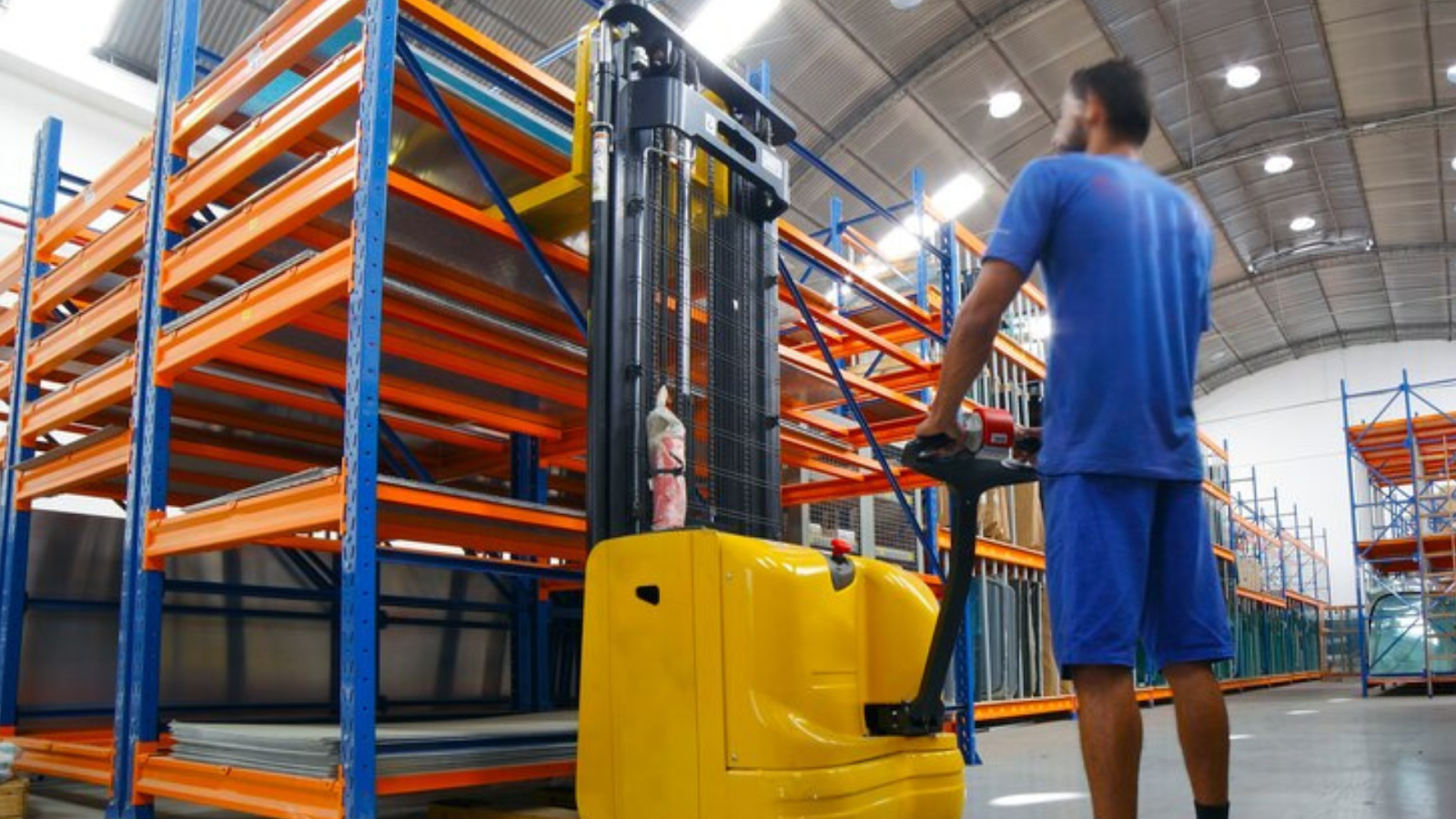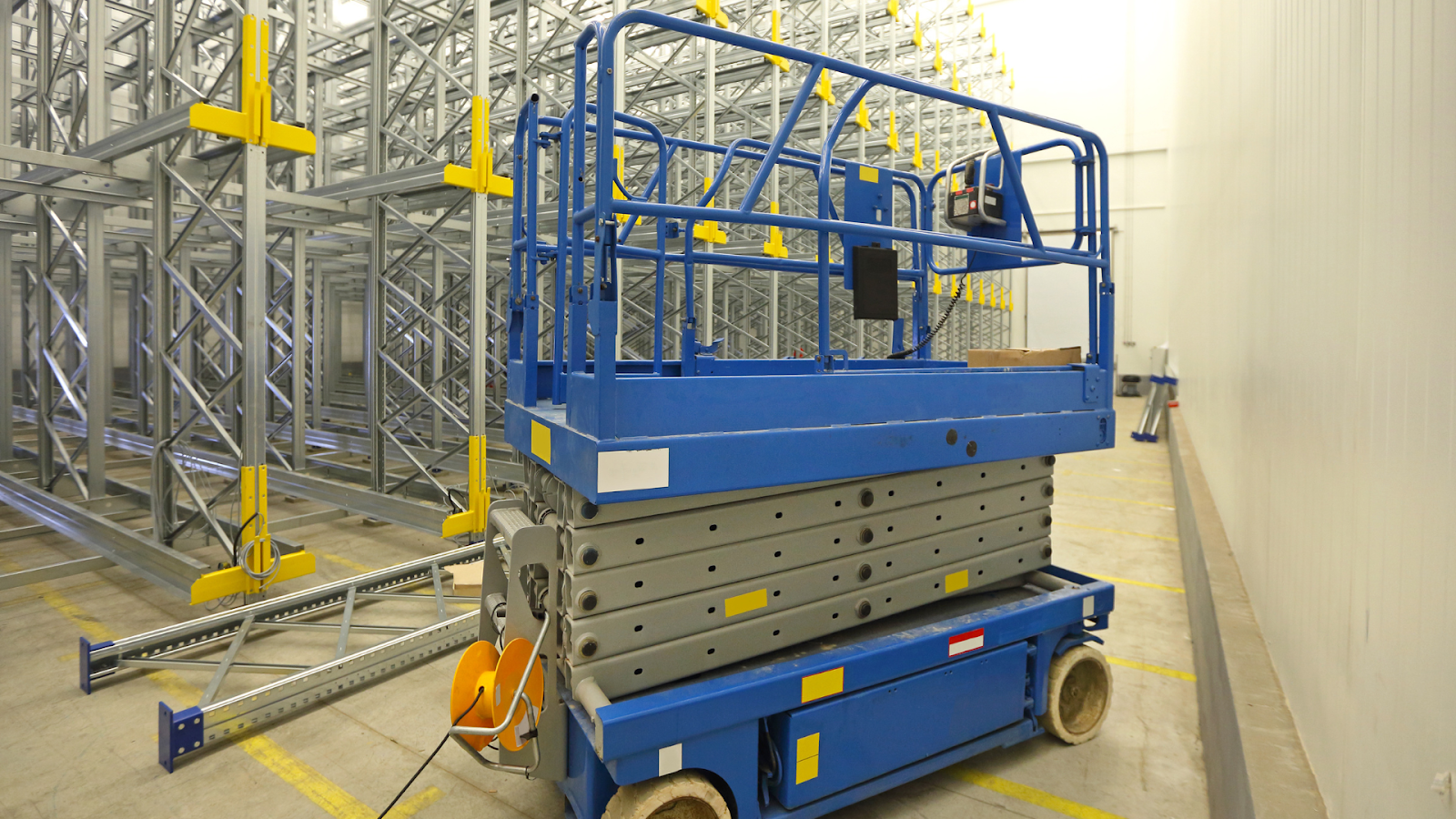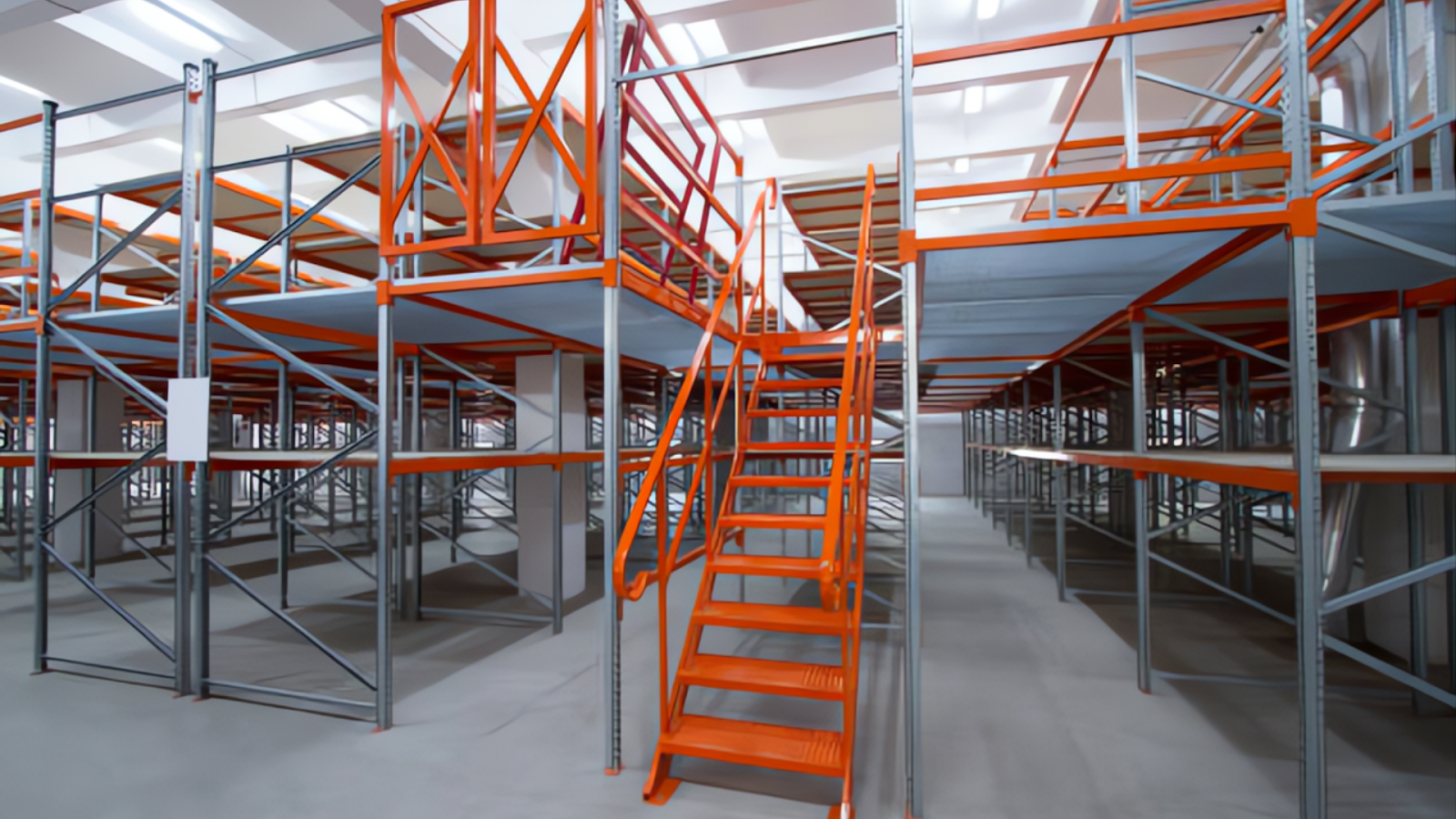Warehouse racking weight capacity is a critical factor that ensures the safe and efficient storage and handling of materials in any warehouse. Without a clear understanding of these capacities, warehouses can face safety hazards, inefficiencies, and costly mistakes.
The 5-15 ton load capacity segment has dominated the pallet racking market over the last few years. This has held the largest market share, highlighting the industry's emphasis on top-notch storage solutions.
This article will guide you through the basics of warehouse racking weight capacity, detailing the key components, calculation methods, and how to ensure your racking system is appropriately rated for your materials.

Warehouse racking systems are designed to hold heavy loads safely and effectively. Several components contribute to the overall weight capacity of the racking system. Each of these must be considered carefully when selecting and installing a racking system to ensure it can handle your warehouse's specific requirements.
The shelf beams in a racking system are responsible for holding the pallets and stored items. The beam's capacity will depend on its size, material, and design. The larger and thicker the beam, the higher the load it can support. Typically, beams are made of steel, and the load capacity is calculated based on their cross-sectional area and strength.
Formula Tip:
Beam Load Calculation = (Weight of material on pallet x Number of pallets per shelf) ÷ Beam length.
This ensures that each beam can safely support the load without exceeding its capacity.
The upright capacity refers to the strength of the vertical component of the racking system. It is typically determined by the thickness of the steel and the height of the uprights. Taller uprights are often subjected to greater forces and need to be stronger to ensure they can carry the load safely.
Formula Tip:
Upright Load Capacity = (Upright height x Steel thickness) x Material strength. This helps to determine the total weight each upright can handle safely.
The racking frame is the skeleton of the entire pallet racking system. It includes both the uprights and the beams that support the load.
In general, the maximum load allowed per pair of beams in a warehouse racking system is typically 4 tonnes. However, this capacity can vary significantly depending on the type of frame used.
It's essential to match the type of frame and beam size with your warehouse's load requirements to ensure safe operations.
Source Equipment offers customizable pallet racking systems and heavy-duty lift tables designed to meet your warehouse’s weight capacity requirements.
Now that you understand the components, calculating the load capacity is essential to ensure your system meets your storage needs and safety requirements.

Calculating the warehouse racking weight capacity requires an understanding of your materials, the frame design, and the beam size. By following the right steps and formulas, you can calculate the exact load your racking system can safely handle.
Start by understanding the weight of your materials. Warehouse racking systems need to support various loads, including heavy pallets, cartons, and drums. Identify the weight per pallet and total load requirements.
Formula Tip:
Pallet Weight Calculation: The weight of materials per pallet = Weight of material x Number of items per pallet.
Next, assess how the weight will be distributed across the racking system. Consider how many pallets will be placed per shelf and how the weight will be balanced across beams.
Formula Tip:
Load Distribution = Total weight of the pallets ÷ Number of shelves.
Choose the frame depth based on the size and depth of your pallets. Pallet depths can vary, so make sure the frame depth is sufficient to handle the load without overextending the beams.
Formula Tip: Optimal Frame Depth = Pallet Depth + Clearance for Forklift Movement.
Beam size impacts the load capacity. The larger the beam size, the greater the load it can handle. Beams are available in various lengths and heights, so choose accordingly based on your pallet dimensions.
Formula Tip:
Beam Load Capacity = (Weight of material x Number of pallets) ÷ Beam length.
Consider the height of your racking system. The taller the uprights, the more weight they need to support, which can affect their strength. Ensure your uprights are tall enough for the vertical storage required but not so tall that they compromise structural integrity.
Formula Tip:
Upright Load Capacity = Upright Height x Steel Thickness.
Now that you have the individual measurements and load limits, calculate the total load capacity of your entire racking system by combining the beam capacity, upright strength, and the number of pallet positions.
Formula Tip:
Total Rack Capacity = Beam Capacity x Upright Capacity x Number of Shelves.
Aisle width plays a crucial role in warehouse efficiency. While it may not directly affect the pallet racking weight capacity, proper aisle width allows for smooth material handling and access. Narrow aisles allow more racks but require specialized equipment.
Formula Tip:
Aisle Width Calculation = (Warehouse Width - (Rack Depth x Number of Rows)) ÷ Forklift Width.
Safe load planning is essential for the longevity and safety of your warehouse racking system. It involves evaluating the combined load of all items on the racking system and ensuring that the weight is distributed evenly.
Once you’ve calculated your racking system’s load capacity, managing your warehouse racking weight capacity with proper solutions like Source Equipment becomes even more critical.

Understanding warehouse racking weight capacity is essential to ensure safe, efficient, and optimized warehouse storage. At Source Equipment, we distribute a wide range of high-quality products from trusted brands like Husky Rack & Wire, Advance Lifts TM, Presto Lifts, Bayhead Products, and Quantum Storage. Our product range is specifically designed to match your storage needs, improve operational flow, and ensure the safety of your warehouse environment.
Our racking systems are designed to optimize space and maximize storage capacity, allowing you to store more materials efficiently while maintaining easy access.
These high-capacity racking systems are perfect for handling large volumes of palletized goods while maximizing vertical storage. They are designed to support heavy loads, increasing warehouse efficiency and space utilization.
These modular wire mesh enclosures ensure that valuable inventory remains secure while supporting your racking systems’ weight-bearing capacity. Rack guards help protect your racking system from accidental damage caused by forklifts.
Our lift solutions streamline material handling by improving vertical mobility, reducing manual labor, and enhancing overall workflow efficiency in your warehouse operations.
These lift tables ensure smooth lifting and safe handling of heavy items, with hydraulic models designed for robust, consistent performance, while pneumatic lifts are ideal for environments requiring low maintenance and precise control.
These heavy-duty lift tables are designed for tough lifting tasks, providing high weight capacity to lift bulk materials efficiently. These systems help optimize material handling and reduce manual labor.
These dock lifts provide a seamless transition between ground level and loading docks, supporting high loads for efficient material transfer across warehouse floors.
We provide sturdy material handling equipment designed to safely and efficiently manage heavy loads, ensuring smooth movement and reducing strain on your team.
These stacking containers are perfect for organizing and storing materials in bulk, ensuring easy access while maximizing space. With durable construction, they can handle large loads without compromising on capacity.
Ideal for waste and material disposal, these hoppers efficiently handle heavy-duty materials while reducing downtime in your warehouse operations.
These lightweight yet durable trucks are designed to carry substantial loads safely. Ideal for fast-moving goods and material handling across warehouse floors.
Our shelving systems maximize storage potential by offering organized, accessible storage for materials, enhancing warehouse efficiency and inventory management.
High-strength steel shelving is ideal for heavy-duty storage, ensuring that your warehouse racks can withstand significant weight and provide long-lasting storage solutions.
A versatile and customizable shelving system, designed to hold a variety of products while maximizing vertical space and ensuring safe weight distribution across shelves.
We offer fully customizable warehouse solutions tailored to your specific needs, ensuring optimal performance and organization across all warehouse functions.
Perfect for creating secure zones within your warehouse or industrial facility, these welded wire partitions offer both security and structural support for a variety of applications.
These secure, individualized storage compartments are ideal for employee use, offering a safe place for storing personal or valuable items.
With Source Equipment’s wide range of warehouse racking weight capacity solutions, you can enhance your warehouse operations, maximize storage space, and ensure safe, efficient material handling.
Understanding the warehouse racking weight capacity is critical to ensuring safe, efficient, and optimized warehouse operations. By calculating the load capacities of beams, uprights, and racks, and considering factors like aisle width, you can make informed decisions about your racking system.
Whether you’re working with standard-duty, medium-duty, or heavy-duty frames, Source Equipment offers tailored racking solutions to match your specific warehouse requirements. We have custom racking systems designed to meet your warehouse’s weight capacity and safety needs.
Contact Source Equipment to enhance your warehouse storage solutions with reliable, high-quality equipment!
Warehouse racking weight capacity refers to the maximum weight a racking system can safely support without compromising its structural integrity. This capacity is influenced by several factors, including the size and material of the beams, the strength of the frame, the height of the uprights, and the type of load being stored. Ensuring the system is properly designed, installed, and maintained will help prevent damage and maintain safety standards.
To calculate the weight capacity of your pallet racking system, you need to consider the weight of the pallets, the load-bearing capacity of the beams, the strength of the uprights, and the number of pallet positions. Use structural formulas to calculate the total load the racking system can handle. Additionally, you must ensure the weight is evenly distributed across the racking system to avoid overloading any specific area.
Several factors impact the weight capacity of warehouse racking systems. These include the type of racking system (e.g., selective, drive-in), the size and material of the beams, the strength of the frame, and the height of the uprights. The type and weight of the load per pallet, as well as any dynamic forces (such as forklift movements), can also affect the system's overall capacity and its ability to safely hold heavy loads.
Yes, pallet racking systems can be customized to meet specific weight and storage needs. Customization options include adjusting the beam size, changing the frame material, and modifying the upright height to accommodate heavier loads or larger pallet sizes. Custom racking can help optimize space utilization in your warehouse and ensure that the system meets your exact operational requirements, increasing both safety and efficiency in material handling.
To ensure compliance with safety standards, conduct regular inspections of your racking system to check for signs of wear, damage, or misalignment. Adhere to OSHA guidelines and other relevant safety standards, ensuring proper load distribution and secure pallet configurations. Make sure your warehouse staff is trained on proper loading practices and safety measures. Additionally, make use of safety accessories such as load signs and safety barriers to maintain compliance and minimize risk.




Ready to Upgrade Your Process Operations?